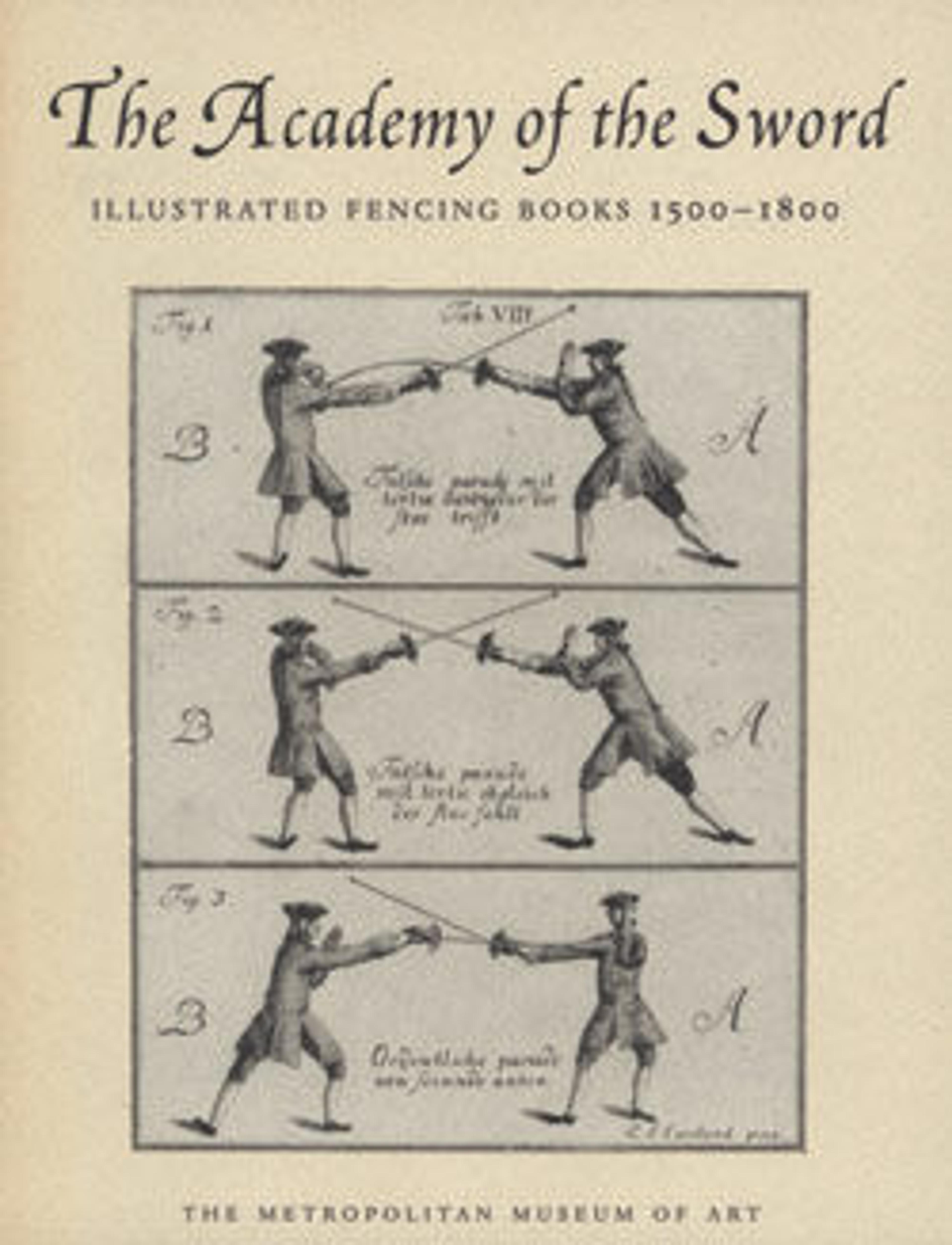Gründtliche Beschreibung der freyen ritterlichen unnd adelichen Kunst des Fechtens in allerley gebreuchlichen Wehren mit vil schönen und nützlichen Figuren gezieret und fürgestellet (A Thorough Description of the Free Knightly and Noble Art of Fencing, in All the Typical Guards, Adorned and Arranged with Many Beautiful and Useful Figures)
Meyer was one of the most influential later proponents of the Geman long sword, following the techniques first codified two centuries earlier by Johannes Liechtenauer. Meyer's manual appeared in four editions between 1570 and 1660. It is divided into five sections, the first and longest dealing with the art of the long sword. The others include instruction in the Dussack (a saberlike wooden practice weapon indigenous to Germany), rapier techniques based on the Italian school, dagger fighting, and the use of various staff weapons.
Artwork Details
- Title:Gründtliche Beschreibung der freyen ritterlichen unnd adelichen Kunst des Fechtens in allerley gebreuchlichen Wehren mit vil schönen und nützlichen Figuren gezieret und fürgestellet (A Thorough Description of the Free Knightly and Noble Art of Fencing, in All the Typical Guards, Adorned and Arranged with Many Beautiful and Useful Figures)
- Author:Joachim Meyer (German, active 16th–17th century)
- Artist:Woodcuts by Tobias Stimmer (German, active 16th–17th century)
- Date:dated 1570
- Geography:Strasbourg
- Culture:German, Strasbourg
- Medium:Ink, paper
- Dimensions:7 3/8 x 10 1/8 in. (18.7 x 25.7 cm)
- Classification:Books & Manuscripts
- Credit Line:Gift of Christian A. Zabriskie, 1957
- Object Number:57.118
- Curatorial Department: Arms and Armor
More Artwork
Research Resources
The Met provides unparalleled resources for research and welcomes an international community of students and scholars. The Met's Open Access API is where creators and researchers can connect to the The Met collection. Open Access data and public domain images are available for unrestricted commercial and noncommercial use without permission or fee.
To request images under copyright and other restrictions, please use this Image Request form.
Feedback
We continue to research and examine historical and cultural context for objects in The Met collection. If you have comments or questions about this object record, please contact us using the form below. The Museum looks forward to receiving your comments.
